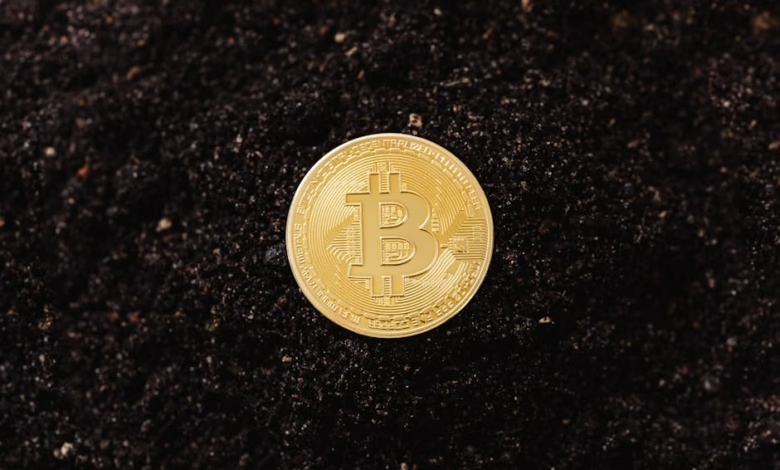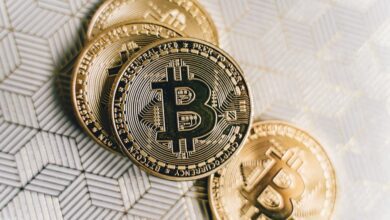Advancements in Gold Mining Technology: Innovations, Market Trends, and the Future of Refining Gold

In recent years, the gold industry has undergone significant transformations driven by advancements in gold mining technology and evolving market dynamics. As a safe haven asset, gold continues to attract investors looking for stability amidst economic uncertainty, particularly in the context of rising inflation and fluctuating gold prices. This article delves into the latest innovations in gold mining technology that enhance both efficiency and sustainability, ensuring that gold production aligns with modern environmental standards. We will also analyze how current gold market trends impact investment strategies, focusing on instruments such as gold ETFs and futures. Furthermore, we will explore the future of gold refining, highlighting the importance of gold recycling and sustainable practices in meeting the growing global gold demand. As gold remains a cornerstone of wealth preservation, from luxury gold jewelry to gold coins investing, understanding these developments is essential for investors keen on navigating the complexities of the gold trade and its potential in a diversified portfolio.
- 1. Innovations in Gold Mining Technology: Enhancing Efficiency and Sustainability
- 2. The Impact of Gold Market Trends on Investment Strategies: A Focus on Gold ETFs and Futures
- 3. Exploring the Future of Gold Refining: From Gold Recycling to Sustainable Practices
1. Innovations in Gold Mining Technology: Enhancing Efficiency and Sustainability
In recent years, the gold mining industry has witnessed significant innovations aimed at enhancing efficiency and promoting sustainability. As gold continues to be a safe haven asset, with gold prices fluctuating in response to global economic conditions, the demand for more effective mining techniques has never been higher.
One of the most notable advancements is the integration of artificial intelligence (AI) and machine learning technologies. These tools enable mining companies to analyze geological data more effectively, improving the accuracy of gold reserves estimation and optimizing extraction processes. By utilizing advanced algorithms, miners can identify the most promising sites for gold production, thereby increasing yield and reducing waste.
Moreover, the push towards sustainable gold mining practices has led to the development of eco-friendly extraction methods. Traditional gold mining techniques often involve harmful chemicals that pose risks to the environment. However, innovations such as bioleaching and the use of environmentally friendly solvents are gaining traction. These methods not only minimize ecological footprints but also align with the growing global demand for ethically sourced gold, satisfying investors who prioritize sustainability alongside profitability.
In addition to extraction innovations, advancements in gold refining technologies are making the processing of gold more efficient. Enhanced purification processes allow for the recovery of gold from lower-grade ores and gold recycling, increasing the availability of gold for the market. This shift not only supports the gold trade but also contributes to lower production costs and potentially stabilizes gold prices.
As central banks continue to hold gold as part of their reserves, the implications of these innovations on the gold market trends are profound. With a more efficient and sustainable approach to gold mining, the industry can respond better to fluctuations in gold prices and global gold demand. This adaptability is crucial, especially in times of economic uncertainty, where gold and inflation often intersect, influencing investors to consider gold ETFs and gold futures as viable investment options.
Ultimately, the ongoing improvements in gold technology not only enhance the financial viability of gold mining operations but also reinforce the industry's commitment to responsible practices. As the market evolves, these innovations will play a pivotal role in shaping the future of gold production, ensuring that it remains a valuable asset for investors, collectors of gold coins, and enthusiasts of luxury gold jewelry alike.
2. The Impact of Gold Market Trends on Investment Strategies: A Focus on Gold ETFs and Futures
As global gold demand fluctuates, understanding the impact of gold market trends on investment strategies becomes crucial for both seasoned investors and newcomers. Gold has long been regarded as a safe haven asset, especially during periods of economic uncertainty and inflation. With the increasing volatility of traditional markets, many investors are turning to gold investment as a hedge against potential downturns.
One significant trend in recent years has been the rise of gold ETFs (exchange-traded funds) and gold futures. Gold ETFs provide investors with an accessible way to invest in physical gold without the need to store or manage it directly. By tracking the price of gold bullion, these funds enable investors to gain exposure to gold prices while benefiting from the liquidity of stock-like trading. This is particularly appealing for those interested in gold coins investing or those who want to diversify their portfolios with gold collectibles.
On the other hand, gold futures offer a different strategy for investors looking to capitalize on gold market trends. These contracts allow investors to speculate on future gold prices, providing opportunities for profit even when physical gold prices decline. Futures can be a more complex investment strategy, but they can yield significant returns when market conditions favor gold production and refining.
The interplay between gold prices and various economic factors, such as central banks' gold reserves and inflation rates, shapes the broader gold market analysis. For instance, when inflation rises, the demand for gold often spikes, driving up prices. This dynamic creates opportunities for investors to reassess their strategies, whether they are focusing on sustainable gold mining practices or exploring the potential of luxury gold products.
Moreover, the global gold trade is influenced by factors such as gold smuggling and the evolving regulatory landscape. Investors need to stay informed about these trends, as they can affect the availability and pricing of gold in the market. As we move into a future where gold and cryptocurrency may increasingly interact, understanding the nuances of gold market trends will be essential for effective investment strategies.
In summary, the impact of gold market trends on investment strategies—particularly regarding gold ETFs and futures—highlights the importance of adaptability in an ever-changing economic landscape. By monitoring gold prices, production levels, and global demand, investors can make informed decisions that align with their financial goals while taking advantage of the unique opportunities presented by the gold market.
3. Exploring the Future of Gold Refining: From Gold Recycling to Sustainable Practices
As we look towards the future of gold refining, several innovative practices and technologies are emerging, reshaping the landscape of gold mining and production. One significant trend is the increased focus on gold recycling, which not only enhances the efficiency of gold extraction but also contributes to environmental sustainability. As global gold demand continues to rise, the role of recycled gold becomes ever more crucial. This practice reduces the need for traditional mining, which can be environmentally detrimental, and aligns with the growing call for sustainable gold mining practices.
In addition to recycling, advancements in gold technology are paving the way for more effective refining processes. Modern techniques, such as hydrometallurgy and bioleaching, are being explored to minimize waste and improve recovery rates. These methods are not only more efficient but also significantly reduce the carbon footprint associated with gold production. As gold prices fluctuate and investors seek safe haven assets, these sustainable approaches may become increasingly appealing, especially to those interested in gold ETFs or physical gold investments, including gold coins and gold bullion.
Furthermore, the gold market trends are shifting as investors become more conscious of ethical sourcing. This has led to the rise of luxury gold products, such as gold jewelry with transparent sourcing, and the promotion of gold collectibles that emphasize responsible mining. Central banks are also recognizing the importance of sustainable practices, as they build their gold reserves and engage in gold trade. This shift reflects a broader acknowledgment that gold, as a hedge against inflation and a stable investment vehicle, must be sourced responsibly.
As we navigate the complexities of the gold market, it is essential to remain vigilant about issues like gold smuggling and illegal mining practices that undermine the integrity of the gold trade. The future of gold refining not only hinges on technology but also on ethical considerations that will define gold's role in a rapidly changing global economy. By integrating sustainable practices into gold refining, we can ensure that gold remains a viable and responsible investment choice amid evolving market dynamics, including the interplay between gold and cryptocurrency.
In conclusion, the advancements in gold mining technology are transforming the landscape of gold extraction and refining, making processes more efficient and sustainable. As we navigate the complex gold market trends, investors are increasingly looking towards innovative solutions like gold ETFs and futures to optimize their gold investments. The focus on sustainable gold mining practices is critical, not only for reducing environmental impacts but also for addressing the growing demand for ethically sourced gold.
As we anticipate the future of gold refining, the rise of gold recycling is poised to play a significant role in meeting global gold demand while minimizing reliance on new gold reserves. Investors should remain vigilant about gold prices and market analysis, especially in light of economic factors such as inflation and the movements of central banks in acquiring gold as a safe haven asset.
Whether it’s through investing in physical gold like bullion and coins, or exploring luxury gold jewelry and collectibles, the diverse opportunities within the gold market continue to evolve. As gold technology advances, so too does the potential for more responsible and profitable gold production, ensuring that this precious metal remains a cornerstone of financial security and investment strategy in an ever-changing economic landscape.
By staying informed and adapting to these trends, investors can leverage the benefits of gold, whether through traditional avenues or emerging markets that intersect with gold and cryptocurrency. The journey of gold—from mines to markets—will undoubtedly continue to captivate those who recognize its enduring value in a fluctuating world.
References:
– Gold Mining Innovations (Author, Year). Retrieved from [link]
– Gold Market Trends and Investment Strategies (Author, Year). Retrieved from [link]
– Sustainable Practices in Gold Refining (Author, Year). Retrieved from [link]





